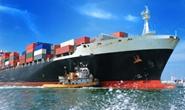Economy

“Perfect Storm” at West Coast Ports
Written by Sandy Williams
January 20, 2015
“A perfect storm of congestion” is how one official referred to conditions at West Coast ports. Sitting offshore on Friday were 18 vessels waiting to dock—normally there are zero, said Philip Sanfield, Director of Media Relations, Port of Los Angeles.
The congestion at the port is due to several causes, said Sanfield. Larger cargo vessels are one reason. Ten years ago ships docking at the port were about 8000 TEU, now their size has increased to 14,000 TEU, putting strain on cargo operations. Ship cargo used to come from a single shipping line, but recently shippers have formed alliances in an effort to stem financial losses. The larger vessels now may carry cargo from 2 or 3 shipping lines, complicating unloading, storage, and distribution. The process has become more disorganized and less efficient.
 Shipping lines used to own and provide the chassis for cargo but have stopped doing so. Chassis, said Sanfield, are basically vehicles with no engines that ship cargo is placed on. Trucks then take the loaded cargo to warehouses for storage and distribution. The chassis are maintained by union workers at the docks. Currently there are four separate operators handling chassis distribution which has caused communication and availability issues. Sanfield says operators are trying to solve the problem and are working toward a March consensus on how to improve efficiency.
Shipping lines used to own and provide the chassis for cargo but have stopped doing so. Chassis, said Sanfield, are basically vehicles with no engines that ship cargo is placed on. Trucks then take the loaded cargo to warehouses for storage and distribution. The chassis are maintained by union workers at the docks. Currently there are four separate operators handling chassis distribution which has caused communication and availability issues. Sanfield says operators are trying to solve the problem and are working toward a March consensus on how to improve efficiency.
Add labor dispute to larger ships, alliances and chassis problems and you have the perfect storm mentioned above. Sanfield, admitted the problems have caused some shippers to divert cargo to other ports, such as Oakland and Canada. This is a concern for the Port of Los Angeles in both the short and long term. “We know we have to earn business and keep it,” said Sanfield.
Container volume in 2014 increased 6 percent year over year at the Port of Los Angeles making it the port’s third busiest year in its history. Full dock capacity is considered to be 80 percent, but currently the port is working at 90-95 percent capacity. Sanfield said it is committed to working with stakeholders to fix the congestion problems. The same issues are being experienced at the Port of Long Beach.
Comments from distributors at West Coast ports affirm the seriousness of the problems. The logistics manager at steel trading company Kurt Orban Partners says at West Coast ports it “has taken weeks for vessels to dock delaying arrivals. And it has taken weeks after that to get containers out of the port resulting in massive demurrage charges.” Cargo arriving in LA headed by rail for Chicago has been delayed as much as a week or two getting off the vessel and on to the rail, causing delays for Midwest customers.
Cargoway Logistics reports frustration with trying to find truckers to move cargo from the ports of Los Angeles and Long Beach. “We’ve had two export shipments we’ve been trying to move for about a month, and can’t find a trucker to do it,” said Cargoway’s logistics manager. “Since there is so much congestion, many truckers have gone out of business: they spend hours and hours waiting in line at port and they’re LUCKY if they can pull one full load or empty container. They get paid per load, so if they can’t pull or return containers, they don’t make any money. 8 of the numbers I called today for truckers in a listing I found through the Port of Long Beach website are no longer in service.”
According to Cargoway, “Ocean carriers are rolling books a week at time if the vessel hasn’t been able to berth or is delayed.” Customers have been advised to avoid moving cargo through the West Coast if at all possible. “In short, it’s an absolute nightmare.”
Cargoway Logistics in Norfolk, Va. reported some diversion of cargo to the Atlantic port, “I have been asked to transload in Norfolk and deliver to west coast on few projects. Which I thought was nuts but guess that’s where we are heading.”

Sandy Williams
Read more from Sandy WilliamsLatest in Economy

Architecture billings continue to slide in March
Architecture firms said billings continued to decline in March, according to the latest Architecture Billings Index (ABI) released by the American Institute of Architects (AIA) and Deltek.

Beige Book shows concerns about trade policy
Manufacturing was mixed, but two-thirds of districts said activity was little changed or had declined.

New York state manufacturing index drops again in April
Firms were pessimistic, with the future general business conditions index falling to its second lowest reading in the more than 20-year history of the survey

Construction adds 13,000 jobs in March
The construction sector added 13,000 jobs, seasonally adjusted, in March, but tariffs could undermine the industry.

Supply chains, end-users brace for impact from tariffs
Supply chains are working through what the tariffs mean for them
